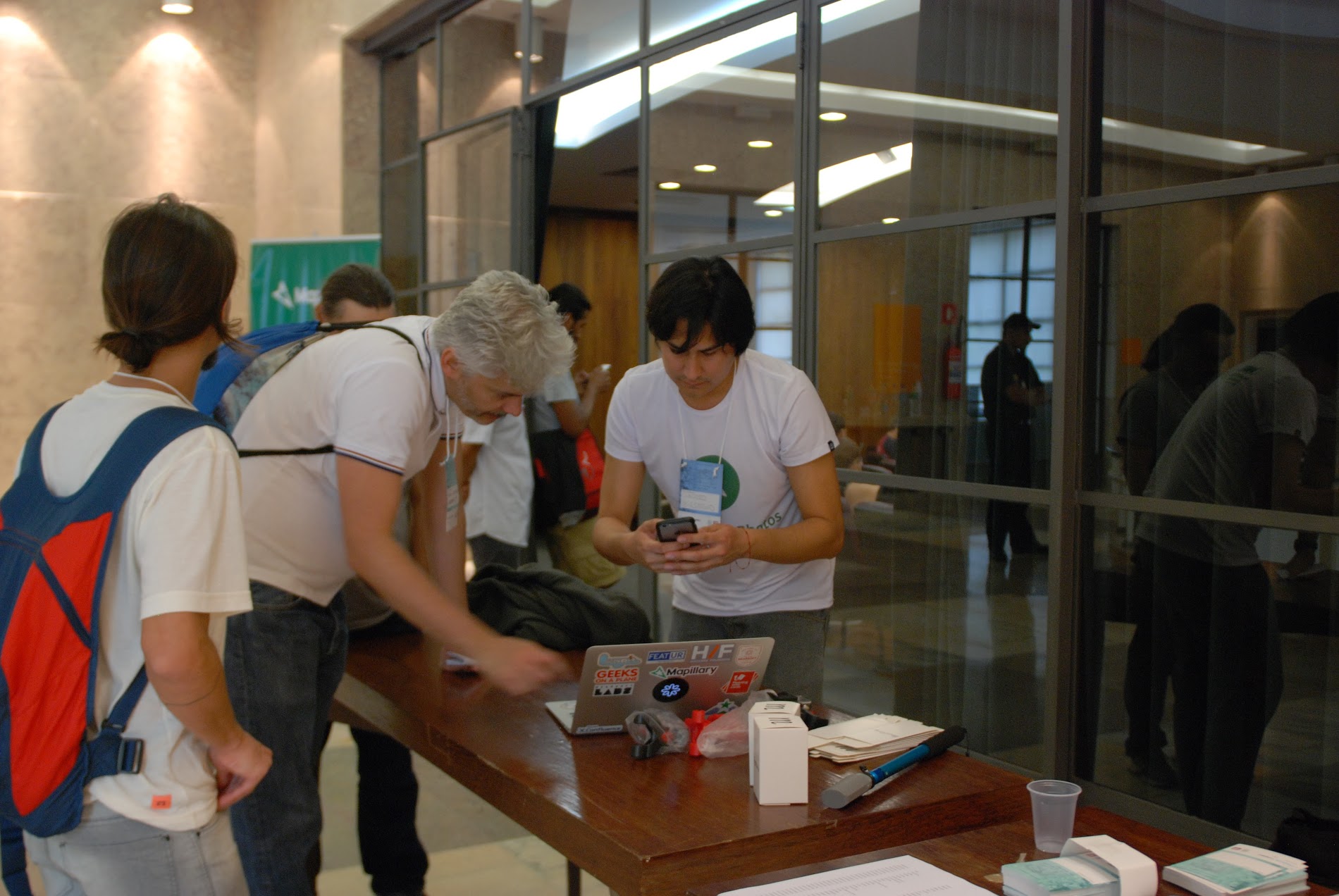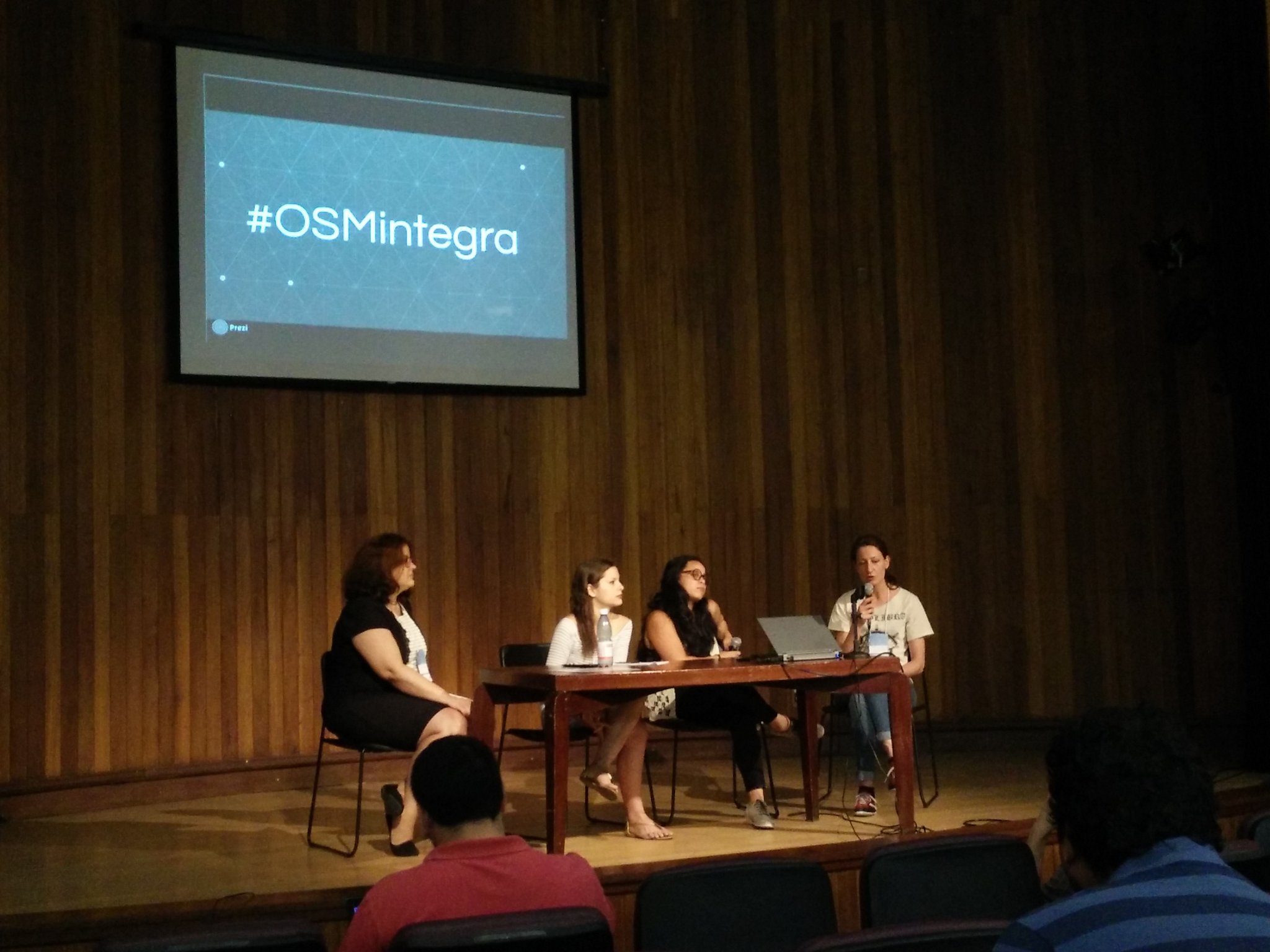Mapping, Tech and Communities—State of the Map Latin America
The city that hosted State of the Map Latin America—or SotMLatAm—this time was São Paulo in Brazil. It was a great opportunity to reach out to some of the community members from Paraguay, Bolivia, Nicaragua, Peru, Mexico, Colombia, Chile, Argentina, and of course also Brazilian community leaders from Brasília, Arrecife, Bahía, Rio de Janeiro etc.
Since the initial launch of the Mapillary platform, we have seen many interested members of OpenStreetMap Brazil who have started contributing on different community projects. For good reason they are some of the top contributors of street level photos in Latin America, and coming to São Paulo was an opportunity to talk to them in person and hear their stories.
 The Mapillary stand at SotM LatAm, perfect for meeting the community
The Mapillary stand at SotM LatAm, perfect for meeting the community
Mapping + community activities = empowerment
One reason for us joining the event was to celebrate the achievements OSM members have worked so hard on. Many of them are working with communities outside of the OSM ecosystem, such as schools, pedestrian associations and cycling organizations. Gonzalo Gabriel Perez had a great talk about how the OSM community needs to reach out to groups and organizations outside its core segment to enrich the experiences for members but also for OSM to continue to be relevant as an open community.
The reasons for engaging as an open community are important and he stated some interesting perspectives:
Diversity is a key component of growth, which among others means bringing more women into the conversation as well as non-tech users of maps, to develop initiatives that cater to all.
Goals can have a broader approach and they can have a deeper impact in our countries, cities and society.
Strengthening the community is done by reaching out to other groups that provide activities and collaboration opportunities that members of OSM can be part of.
Global collaboration is a key driver in crisis situations and we need to continue fostering it.
In places such as Bolivia and Peru with small tech communities they’re finding interesting ways to reach out to groups of students that are photo mapping parts of their hometowns in an effort to improve their maps. They have leveraged academic activities which involve the local community, and generate engagement using collaborative platforms to do photo mapping of the interesting areas of the town. Some examples are the streets of Ayacucho in Peru and the University Campus of La Paz in Bolivia.
Congratulations to Katia Choquehuanca Quispe who gave an excellent talk about the photo mapping in Bolivia; Rubén Lopez Mendoza who explained how they were leveraging open source software in mapping the streets of Peru; Fredy Gamez who mapped the local transportation network of Duitama in Colombia. They shared how to work with communities and the positive impact it can have for citizens.
In our talk we showcased what Mapillary is doing with Scouts in Colombia. It is a great privilege to work side by side with this international organization. We will be recognizing Scouts who photo map 5 km, 10 km, 15 km and 25 km. If you are working in a Scouts community, please email us to start a collaboration with your troop. :)
Diversity in the OpenStreetMap community
One of the most outstanding activities was the meetup of #GeoChicas (#GeoLadies) a few days before the SotM event. It was an initiative that four outstanding women in the OSM community—Selene, Celine, Laura and Miriam—kickstarted in the Telegram channel of OSM, and resulted in a panel discussion at the conference.
It was great to see female GIS professionals taking the stage to talk about why they believe there needs to be more participation from women in the OpenStreetMap community. It is an important component of diversity in a group, and furthermore it's about sending the right message to any women outside the group that want to be part of the activities and initiatives of OSM.
 The #GeoChicas panel
The #GeoChicas panel
They launched the hashtag #OSMintegra so the community can ask questions on social media, and proposed initiatives to improve diversity in the community.
Photo mapping activities at SotM LatAm
I joined a few other mappers to photo map some of the interesting parks and sites in São Paulo. We brought in several 360 cameras to map around the city. You can now see the art museum, Museu de Arte de São Paulo in 360 photos from both outside and inside. That place is a must-see in the city for any art lover.
If you like parks, then the Parque de Trianon near Avenida Paulista is a must, but if you have more time then the Parque de Ibirapuera is a great choice for outdoor lovers.
Overall the event was a success! Thank you OpenStreetMap Brazil for organizing a great conference and providing speakers that are part of really interesting initiatives that can be replicated in any country of the world. A very special mention to Vitor, Wille, Tiago and Arlindo who made my trip to São Paulo particularly memorable.
Da hora! Muito obrigado!
/Claudio
